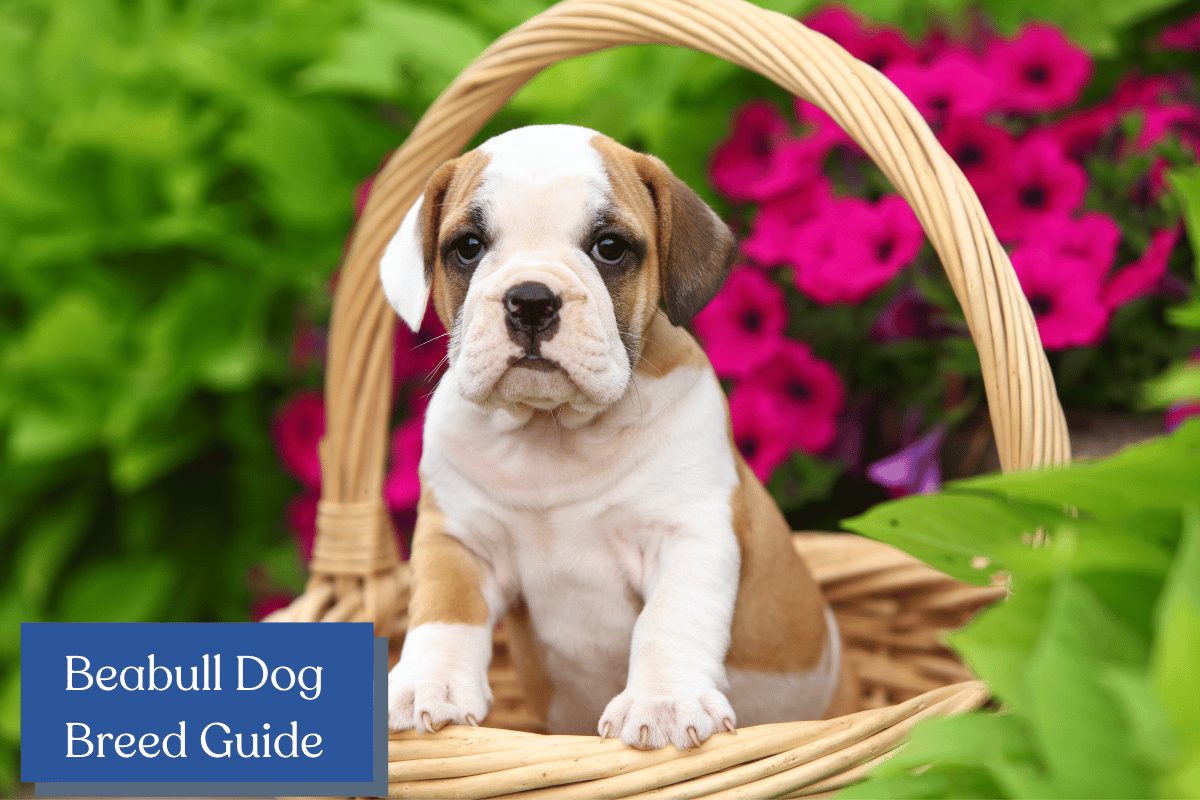What do you get when you cross a Beagle with a Bulldog? You get the ultimate combo of two awesome breeds: a Beabull! Now heads-up, Beabulls are considered hybrid dogs or designer dogs, so the breed is not officially recognized by major kennel clubs like the American Kennel Club (AKC).
But if you’re not into showing off, then this friendly and loyal blend might be right up your alley! Keep reading for everything you need to know about these adorable pups!
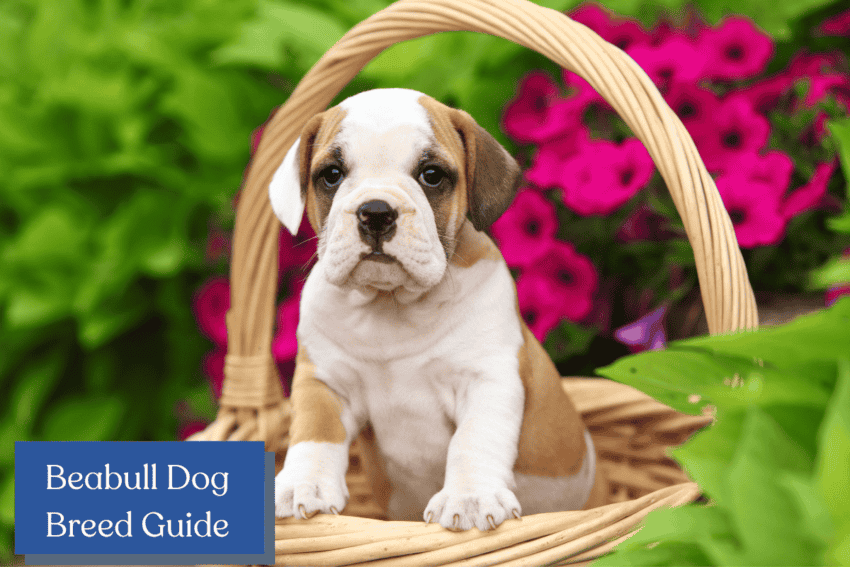
BEABULL FAST FACTS:
Beabull Origins
The Beabull is a designer dog breed that is a cross between the Beagle and the English Bulldog. Designer dogs are intentionally bred to combine the desirable traits of two different purebred dog breeds.
No one knows the exact story of the Beabull since the “designer” dog breed concept is still relatively new and not well-documented. However, it’s likely that the Beabull was first bred in the United States, where many designer dog breeds have originated.
The goal of creating the Beabull was likely to combine the Beagle’s hound scent abilities and friendly personality with the English Bulldog’s distinctive appearance and gentle nature. With all designer breeds, the characteristics and traits of individual Beabulls can vary widely depending on the specific genetics they inherit from their Beagle and English Bulldog parents.
It’s recommended to research and understand both parent breeds before bringing a Beabull into your home. We can help you with that!
Physical Appearance
Looks-wise, Beabulls can differ physically since they’re a blend of Beagle and Bulldog features.
They often have a sturdy and muscular build, inheriting traits from both the Beagle and the Bulldog. Their size and coat can also differ, but generally, they are medium-sized dogs with short, dense coats.
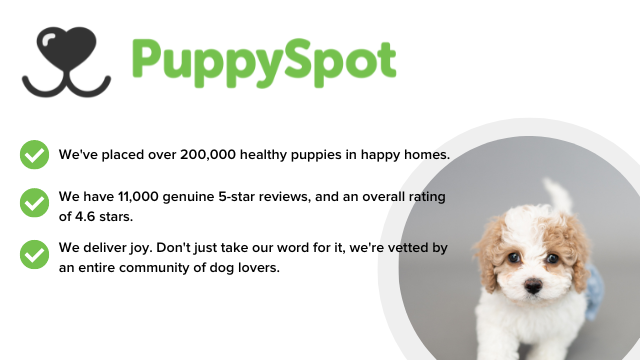
Beabulls come in many colors like white, black, brown, spotted, brindle, and tricolor.
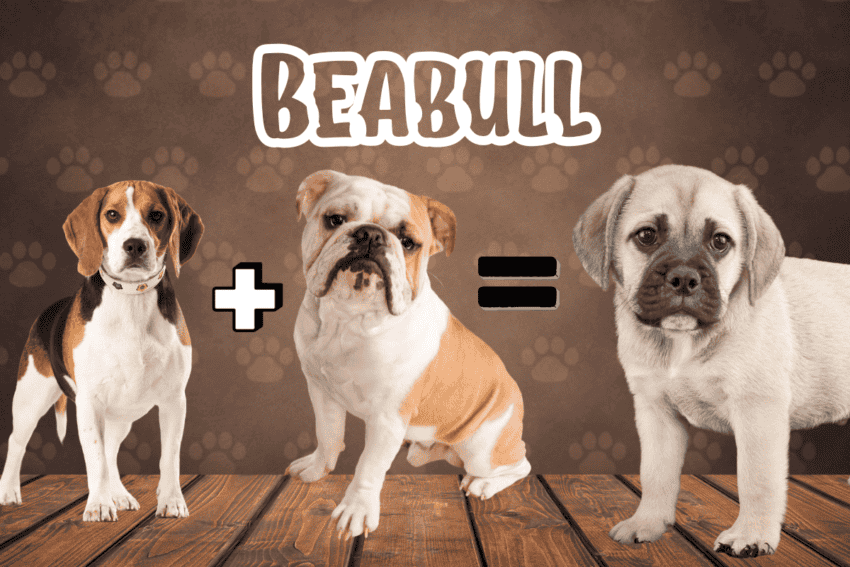
Beabull Temperament
When it comes to personality, Beabulls take the best from both worlds.
Beagles are known for their friendly, curious, and outgoing nature. Bulldogs, on the other hand, are often characterized as loyal, gentle, and affectionate.
As a result, Beabulls are typically friendly, sociable, and great with families. But they might have a bit of that stubborn streak, so expect your pup to be strong-willed and maybe a bit nosy.
Exercise and Training
Exercise and playtime are the Beabulls’ jam. They’ve got a decent energy level, so going for walks, playing fetch, or doing some brain games will keep them happy. If you live a semi-active lifestyle, the Beabull is a good choice.
Keep in mind that due to their Beagle heritage, Beabulls may have a strong scent drive making them prone to following their noses, so training and keeping them on a leash when outside is recommended.
Are Beabulls easy to train?
A Beabull requires patience, consistency, and positive reinforcement. They aren’t considered the brightest of the bunch, so teach them simple commands and plan on being repetitive with this breed.
Here are some tips on how to train a Beabull:
Start Early: Begin training as soon as you bring your Beabull puppy home. Early socialization and training are crucial for developing good behavior and habits.
Basic Commands: Teach essential commands like “sit,” “stay,” “come,” “down,” and “leave it” for good manners and control.
Positive Reinforcement: Use positive reinforcement training like treats, praise, and toys to reward your Beabull for correct behaviors.
Consistency: Be consistent in your training methods and commands. Use the same cues and rewards each time to avoid confusing your dog.
Short Sessions: Keep training sessions short and frequent. Beabulls can have shorter attention spans, so multiple short sessions throughout the day are more effective than long, exhausting sessions.
Socialization: Expose your Beabull to various people, animals, environments, and situations. Proper socialization helps prevent fear, aggression, or other reactivity issues and contributes to a well-adjusted dog.
Crate Training: Introduce crate training to provide a safe and comfortable space for your Beabull. Crate training can also aid in housebreaking and preventing destructive behavior when you’re not around.
Housebreaking: Establish a consistent routine for bathroom breaks and reward your Beabull for eliminating in the appropriate area.
Leash Training: Teach your Beabull to walk on a leash without pulling. Start with short, controlled walks and reward good behavior.
Behavior Management: Manage unwanted behaviors like chewing, jumping, and excessive barking with commands and redirection to more appropriate activities like chewing a toy.
If push comes to shove, consider an obedience class with a dog trainer for personalized guidance. Each dog is unique, so be adaptable and tailor your training approach to your Beabull’s personality and needs.
Grooming
Beabulls generally have short, coarse coats that are easy to maintain. Regular brushing can help keep their coat in good condition, and occasional baths can keep them clean.
Though easy to groom, they shed moderately, so they may not be the best for those with allergies. Baths are recommended every 4-6 weeks
Cleaning their wrinkles (if they inherit the Bulldog’s facial wrinkles) and checking their ears regularly are also important for preventing any potential health issues.
Common health issues for Beabulls
Speaking of health, like any mixed breed, Beabulls can inherit stuff from both sides of the family tree. Hip issues, breathing quirks (thanks, Bulldog face), and skin or ear issues could pop up.
Common health issues for Beabulls include hip dysplasia (a condition where the hip joint doesn’t develop properly), respiratory issues (due to the Bulldog’s brachycephalic skull shape), and potential ear and skin problems.
Regular veterinary check-ups, a healthy diet, exercise, and proper care can help manage some of these concerns.
Where to find Beabull puppies
Always check your local animal shelter first – you might get lucky!
When searching for a Beabull puppy, learn how to avoid buying from a puppy mill, ask for recommendations, and follow up on referrals.
You might also consider adopting from organizations like Petfinder or PuppySpot.
Just make sure you have the time, resources, and commitment to care for a Beabull before bringing one into your home!
And remember, each Beabull has its unique mix, so get ready for a one-of-a-kind furball with individual quirks.
Early socialization, consistent training, and proper care are essential to raising a well-adjusted and happy buddy.
FAQs
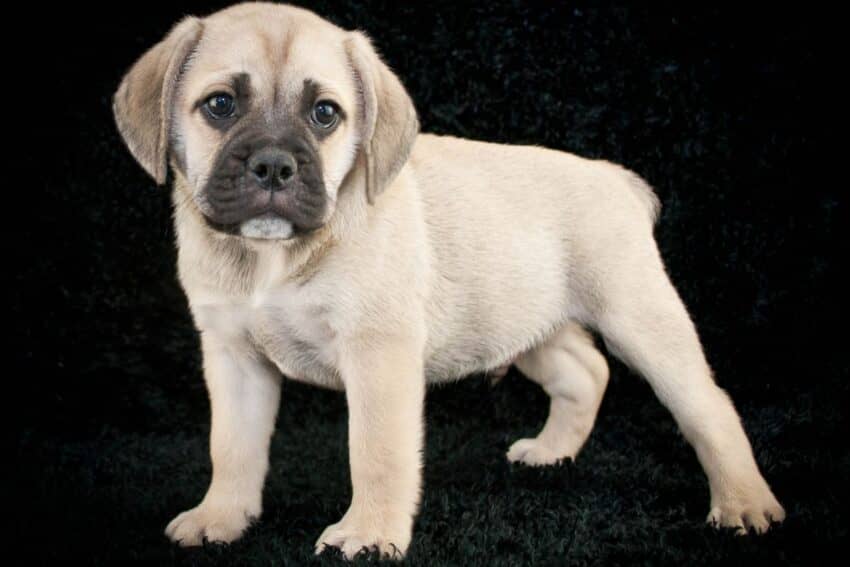
Is a Beabull a good dog?
Taking the traits of both the Beagle and the Bulldog, the Beabull makes a loyal family dog with an independent streak and no need for strenuous amounts of exercise. They make great companions for novice dog owners due to their easygoing personality.
What are Beabulls known for?
Beabulls inherit the playful nature of Beagles and the sturdy build of Bulldogs, resulting in high energy and loyalty. They are also affectionate, which makes them excellent as family pets, co-pets, and human companions.
Due to this close bond, please understand that this breed is prone to separation anxiety.
What are the drawbacks of owning a Beabull?
Like all crossbreeds, Beabulls have common health issues like hip dysplasia. However, they are mostly healthy dogs with an average dog lifespan.
Warning: they can get noisy: Beagles are known for baying and howling, while Bulldogs can snore and snort due to their smushed faces!
And last, Beabulls may struggle with weight gain if not fed the appropriate amounts of food combined with 40-60 minutes of exercise daily. But no worries, Beabulls are satisfied with short walks every weekday and longer ones on the weekend.

